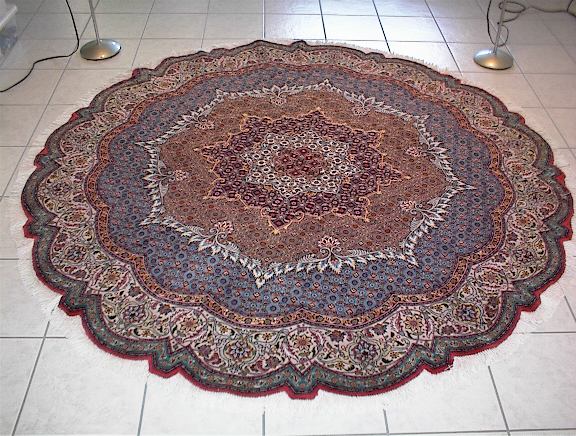oriental carpets and rugs

oriental carpets and rugs
oriental carpets and rugs::With its rich history and color, the oriental rug often is called the aristocrat of carpets.Although the oriental rug of today may not soar through the air like the magic carpet of arabian legend, the oriental rug does perform magic, transforming interior spaces into extraordinary spaces.
The term, oriental rug, traditionally has been used to describe handknotted rugs from the east.
The process typically involves stretching warp threads on a and knotting the pile to these threads.
When a row of is completed, a weft thread is inserted.
Once the entire carpet is knotted, the pile is shorn.
To a large degree, the precision of the design depends on how tightly the rug has been knotted and how short the has been cut.
A superb oriental rug may have more than 500 to 1,000 knots per square inch.
Historically, the great carpetproducing areas include turkey, persia, the caucasus and turkestan.
Afghanistan, pakistan, nepal, india and china also must be added to the list.
And under arab influence, spain, too, has produced handknotted rugs of distinction.
History although there are references to carpets by early greek and arab writers, just when the first oriental rug was woven is unknown.
Beautifully designed, the rug dates from the 4th or 5th century b.
And is the earliestknown surviving example of carpet.
One theory is that the technique of knotting carpets was begun by the nomadic tribes of central asia.
These tribes produced small rugs typically decorated with geometric motifs inspired by plant and animal forms.
For the nomad, the rugs were both decorative and utilitarian, serving as floor covers, wall hangings, curtains and saddlebags.
Because the nomadic carpetmakers were forced to dismantle their looms and move on whenever their security was threatened by natural elements or human foes, their creations may contain irregularities in weave, selvages and design.
The wandering nomads are credited with spreading the art of carpetmaking to new lands and peoples.
Some of the greatest carpetmaking centers developed in persia and turkey.
Persian manuscripts from the reign of chosroes i, the king of persia from 531 to 579, describe the spring carpet of chosroes.
This rug was woven of wool, silk, gold and silver.
It was studded with precious stones.
A number of carpets survive from this era and are recognized for their harmony of colors and originality of designs.
Carpetmaking probably has been taking place in turkey at least as long as in persia.
Turkish rugs appear frequently in the paintings of well known artists.
It was primarily through italian merchants that the oriental rug became recognized and valued in europe.
Venice early established itself as a major trading trader with the east.
Venetians spread oriental rugs along their narrow streets, hung the rugs from windows and used them to decorated their gondolas.
By the early 16th century, oriental rug collections could be found in the great courts of europe, including those of catherine de medici and charles v.
The lord chancellor of england, cardinal wolsey, is reported to have purchased 60 turkish carpets from a venetian dealer to furnish his palace at hampton court.
Western interest in oriental rugs waned during the 17th and 18th centuries.
But after the great exhibition of 1891 in vienna, europeans had renewed enthusiasm for the carpets.
Americans soon followed suit.
Western importers began asking the carpetmakers to modify dimensions, and sometimes color and design, to satisfy the tastes of europe and the americas.
In the 20th century, the appeal of the oriental rug continues to grow.
oriental carpets and rugs::Other nations with a notable history of rug
weaving are egypt, morocco, and spain oriental carpets and rugs
No comments:
Post a Comment